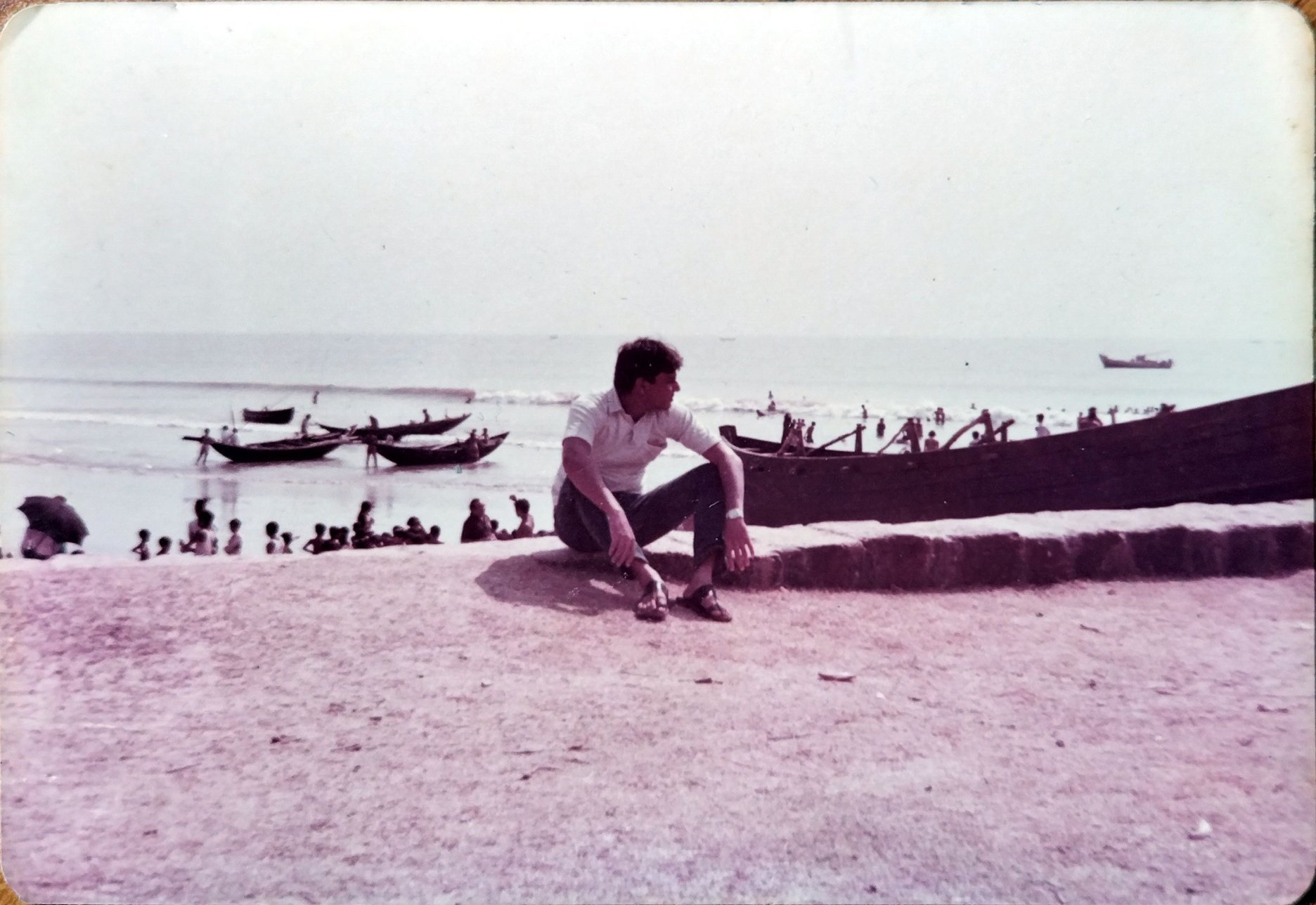A Fisherman’s Guide to the Perfect Fish Curry

Fazle Abbas spent much of his time in exile in the Maldives where he spent months trying to recreate his mother’s fish curry from memory. It was only years later, visiting British-occupied Calcutta, that he figured out the missing trick: a technique borrowed from the legendary biryanis of Calcutta.
The Bohri diet hinges on the availability of halal meat. Fish is considered halal only if it has been captured alive, and a ‘Bismillah’ is whispered to the heavens before it is butchered. As such, halal fish is not easy to come by.
My dadu, Fazle Abbas, had a tumultuous life. He was banished to Maldives (from Gujarat) by his step-father at the tender age of 16, where he became a fisherman. He loved the sea and the freedom it promised, and it allowed him access to halal fish himself. Those years in Maldives as a fisherman, with access to the best of the ocean, he spent trying to recreate his mother’s fish curry.
Fazle Abbas
There was no documented recipe. In fact, he had never even watched his mother preparing the dish. All he knew was its flavours — it tasted like the ocean. A single bite would melt in the mouth. It was rich, coated in a velvet sauce and simmered to perfection in subtle spices. He couldn’t possibly know which spices elevated this dish to the realm of the sublime. Perhaps it was turmeric, with its warm, earthy notes? Or cumin which added a depth of flavour that was both subtle and profound. Green chillies were essential, of course, with their fiery heat, their presence bold in every mouthful.
But in every recreation, something was always missing.
After a tough week at work, dadu would experiment with the fish he had caught. Sometimes he’d add more curry leaves, creating a fragrant hint of citrus and bitterness that would linger on the palate. Or he would play with the quantity of coconut milk, making the curry creamy and indulgent, binding all its flavours together.
A few years later, in his early twenties, the man Dadu worked for tried to convince him to marry his daughter. Unable to refuse but not wanting to get married, Dadu boarded a ship headed to Calcutta, where he eventually settled down. He found himself in a city under British rule. It was here, after eating the famous Calcutta biryani that he realised what had been missing in his recipe: a technique called dum, the slow-cooking of ingredients in a sealed pot on low flame.
I never got to meet dadu. He passed away when my Abba was only eighteen. But, this story is still re-told fondly every time he is remembered (along with the time he jumped into crocodile-infested waters, but, that's a story for another time).
It is incredible how, years of his passing, his presence lingers over a pot of fish curry. This recipe comes from my dadi, who often saw him make it and wrote it down, preserving his balance of spices, and that final technique he borrowed from the kitchens of Calcutta.
RECIPE FOR FAZLE ABBAS’ BOHRI FISH CURRY
Ingredients
500g fish (rohu is preferred but any firm-fleshed fish)
1 tbsp red chilli powder
1 tbsp turmeric powder
1 tbsp coriander powder
Salt to taste or like my Dadu used to say hasbe zaika namak
Oil for frying
2-4 curry leaves
2-3 onion, chopped
1 cup tomato puree
3-4 green chilies
Black pepper, to taste
1 tbsp roasted cumin powder
1 tbsp fresh ginger-garlic paste
2 tbsp coconut milk
Water as needed
Method
Cut off the head and tail and debone the fish. Cut diagonal slits on the body. Apply salt to the fish and wash thoroughly. Set aside.
In a bowl, mix red chilli powder, turmeric powder, coriander powder, and salt. Rub this mixture all over the fish pieces. Let it marinate for 30 minutes.
Heat oil in a pan and fry the marinated fish until golden brown. Remove the fish from the pan and set aside.
In the same pan, (use the same oil you fried your fish in, that's the magic elixir) add curry leaves and chopped onions. Fry until the onions turn red and the oil separates.
Add tomato puree, green chilies, black pepper, roasted cumin powder, and ginger-garlic paste (make sure to crush fresh ginger and garlic to make a paste and not the ready-made kind). Cook for a few minutes until the raw smell disappears.
Add coconut milk and water to the gravy.
Add the fried fish pieces into the gravy.
Cover the pot using a lid and seal it by putting a heavy object on top. Give it dum for 15 minutes.
Serve hot with steamed rice or roti.
Sakina Taizoon Limbdiwala is a sub-editor and a fair-weather writer and artist, who loves devouring fan-fiction, true crime podcasts and newsletters in her free time.
ALSO ON GOYA












